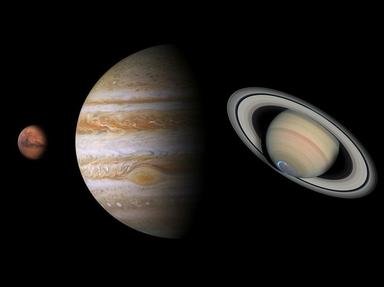Quiz Answer Key and Fun Facts
1. The obvious place to start is with the centre of the Solar System, the Sun. Do you know approximately how many times the diameter of the Sun is bigger than Earth?
2. The smallest and closest planet to the Sun is Mercury. Why is it difficult to study Mercury?
3. The second planet from the Sun is Venus. What is unique about Venus compared to the other seven planets?
4. The third planet from the Sun is of course our Earth. Where does Earth rank in size compared to the other planets?
5. Why is Mars, the fourth planet from the Sun, called the Red Planet?
6. The fifth and largest planet from the Sun is Jupiter, which is a massive gas planet and the largest of all the planets. Can you tell me the name of the comet that collided with Jupiter in 1994?
7. The sixth planet from the Sun is Saturn and is known for its rings. What are those rings made of?
8. The seventh planet from the Sun is Uranus. When was the planet Uranus discovered?
9. The eighth planet from the Sun is Neptune. Because of the downgrading of Pluto as a planet, Neptune is now the last planet in our Solar System. Can you tell me the length of a year on Neptune?
10. Our Moon, was known as "Selene" and "Artemis" by the ancient Greeks and "Luna" by the Romans. What is the distance from Earth to the Moon?
Source: Author
wenray
This quiz was reviewed by FunTrivia editor
gtho4 before going online.
Any errors found in FunTrivia content are routinely corrected through our feedback system.

